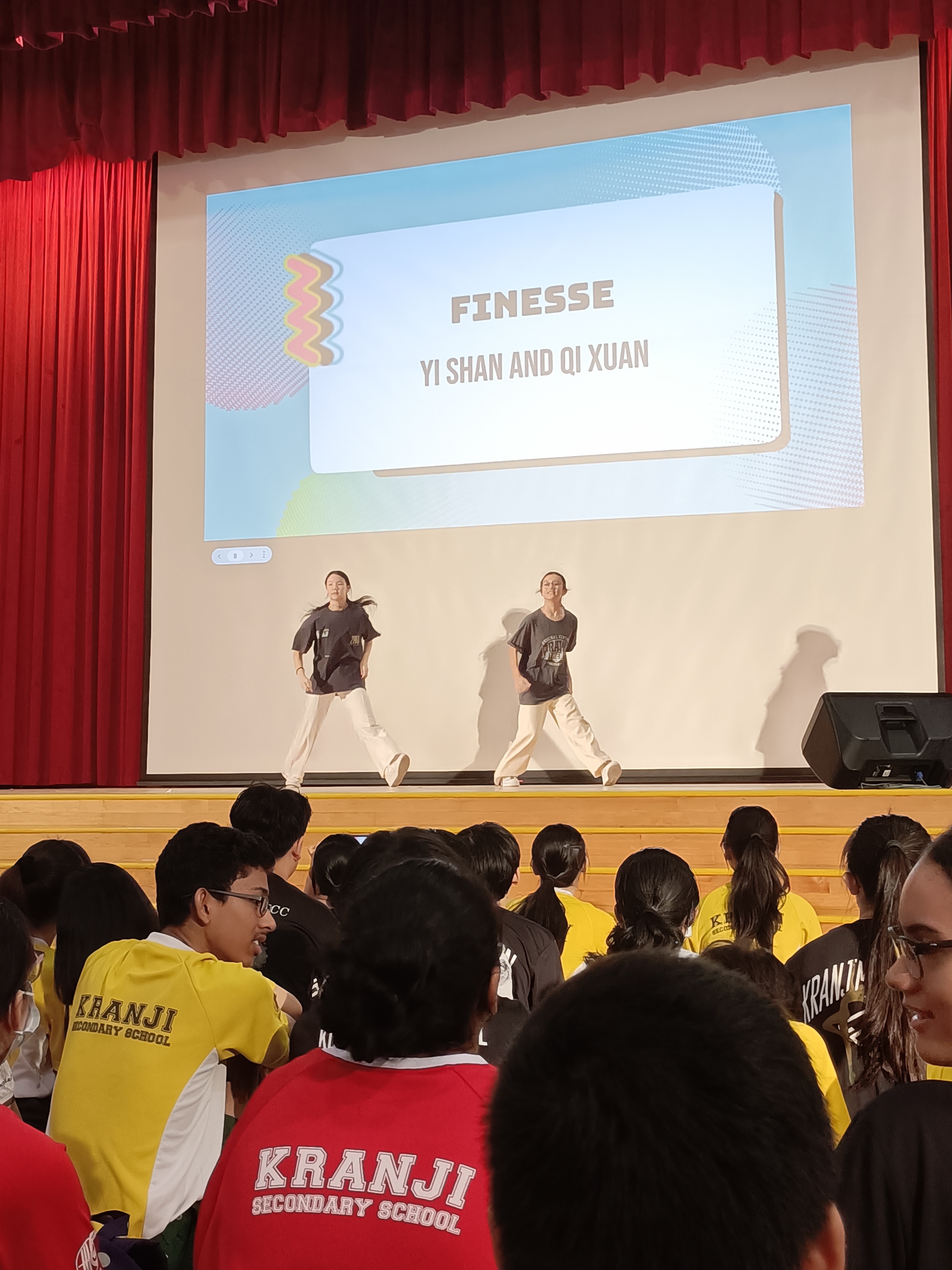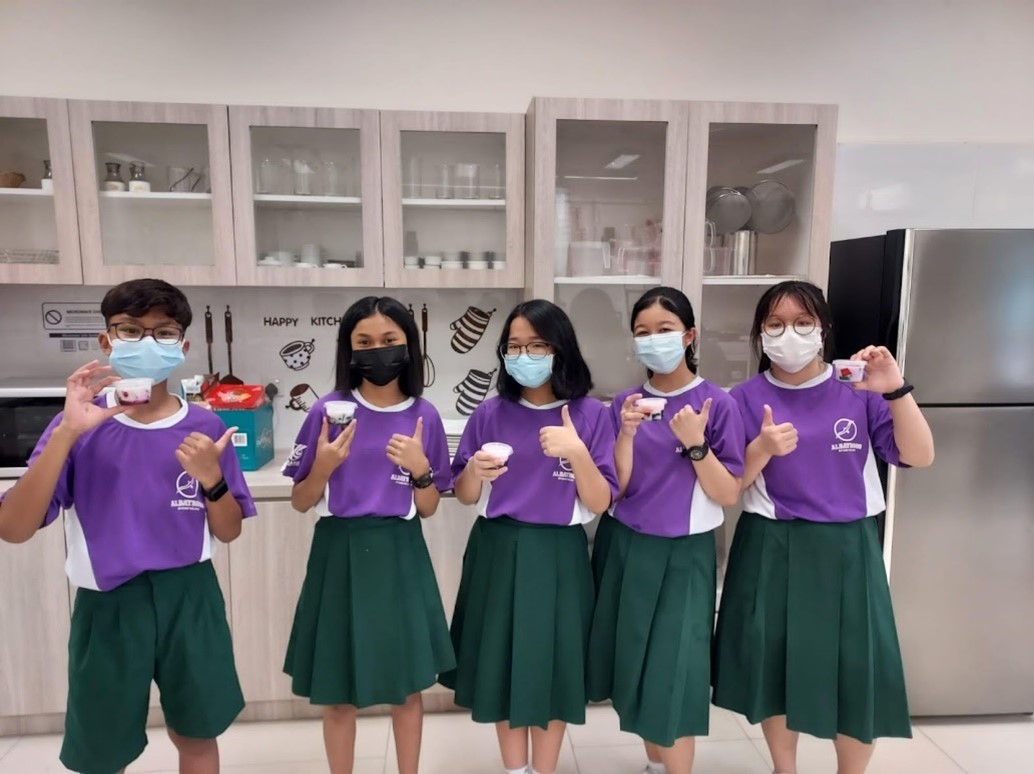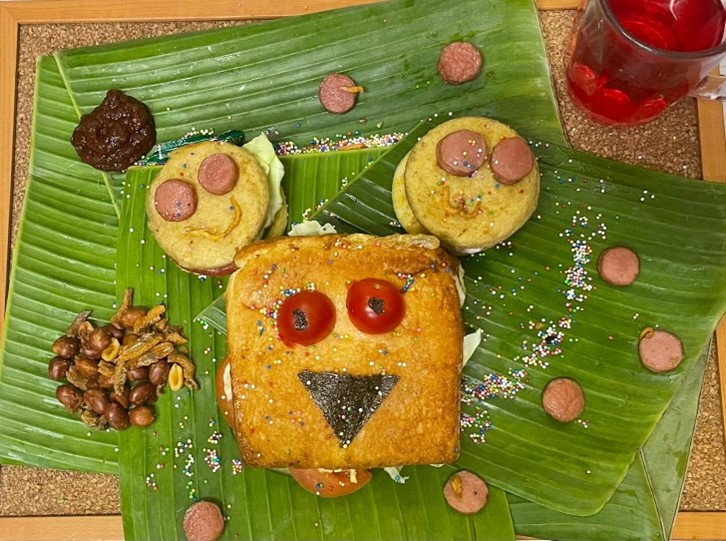Aesthetics
The Aesthetics Department
The Aesthetics Department encompasses four dynamic subjects: Visual Art, Music, Design & Technology, and Nutrition & Food Science. Within these subjects, students embark on a journey of self-expression, exploration, and practical application. From the visual realms of painting and sculpture to the harmonious melodies of music, and the functional elegance of design, to the science behind nutrition and food, our department offers a diverse array of avenues for both artistic and scientific expression. Students learn various skills such as prototyping, cooking, music and art making. They also learn project management skills, creativity and empathy, through learning journeys, workshops, community projects and competitions.
The department aims to inspire and empower students to not only appreciate the beauty in the world around them but also to actively contribute to it through their own unique perspectives and talents.
Kranji Got Talent 2023
A yearly platform that celebrates the diverse and extraordinary artistic talents within our school. Students have the opportunity to showcase their unique talent through captivating performances. From singing and dancing to acting and other forms of artistic expression.






Art
| 2021 | 2022 | |
|---|---|---|
| Live On Festival (LOF) 2022 – Design Competition (Winner) | Live On Festival (LOF) 2021 – Design Competition (Winner) |
The Art unit aims to develop Kranjians’ passion for art; thinkers who are capable of communicating visually through various means of Art making. Through these efforts of perceiving, communicating and appreciating Art, students develop the confidence to discuss, respond and connect their lived experiences with society and culture.
Teaching and Learning Syllabus
To achieve a learner-centred curriculum, the Lower and Upper Secondary Art are aligned to the three big ideas in the revised Lower Secondary Art syllabus which are:
- Art helps us to see in new ways
- Art tells stories about our world
- Art influences how we live
These ideas serve to meaningfully contextualise the components of Art learning. The inquiry-based learning approach considers the designing of the curriculum with themes carefully chosen to make Art relevant to Kranjians’ daily lives. The Arts Education Programme in Kranji aims to be inclusive and differentiated to cater to all students.
To extend the learning of sculptures, the Secondary 1 students will be given an inquiry based task to create sculptures using recycled materials. The Art unit aims to widen the exposure of different art forms for students to express their thoughts, experiences and feelings in different ways.

Our entire level of Secondary 2 students participated in the Live On Festival (LOF) 2022 – Design Competition. Out of the 2200 entries received from 83 schools, our student Lim Hui Ler, Esther from 2K2, emerged as one of the winners.

> “My artwork depicts two kidneys- one healthy and the other dying. The healthy kidney is portrayed as a functioning and growing metropolis. The people in the city are strong, healthy and carefree, and going about their normal lives with friends and family. However, the dying kidney is portrayed as a war-torn city, reduced to a pile of rubble.To me, war is a terrible situation and it happens in many countries. Like a disease, it destroys and robs people of hope, love, and joy. The enemy soldier, pointing a gun at one of the civilians represents the threat and effect of diseases which is the reason why the kidney failed. The two civilians represent the last shred of hope and life left before the entire kidney shuts down. However, hope is not lost as help is sent from the thriving metropolis to the war-torn city to aid their woes and rebuild the city. The soldier and the paramedic on the bridge represent organ donation, which gives hope to the people in need of a new organ. I hope that through my artwork, I could bring forth this message: Do your part to give hope. Donate your organs now.”
Esther 2K2
Secondary 3 students experimented with a variety of materials, techniques and technologies to translate their ideas into visual forms and expressions.
Learning beyond school
To enable students to connect and respond to artworks, students will experience museum-based learning as part of their learning journey. This is to cultivate visual literacy skills and appreciation of the Art world.

The National Gallery Singapore takes art education on the road with its new Roving Art Truck launched in June 2022. This unique art programme aims to encourage our students to head down to explore our National Gallery Singapore. The truck houses 10 iconic paintings from the National Collection in Singapore. It was in Kranji Secondary School from 22 to 24 August 2022 for students to encounter Art outside the museum. The truck provided an unusual experience for the students to co-create and engage in various activities.
> “When I first saw the art truck, I was amazed by the truck’s interesting design as it was colourful, vibrant and had an attractive camouflaging pattern. When I went in the truck it almost felt like it was a museum due to the environment there! I had a chance to look at the 10 different artworks made by different artists in Southeast Asia but there are three pieces that will be further researched on. The three pieces are Harmony in Green: The Two sisters by Lê Phõ made in 1938 drawn on silk. The second piece is Skyline of New York by Ahmad Sadali in 1957. What I found compelling is that the artist could express the skyline buildings just by using different lines and shapes to achieve a sense of unity. Finally, the painting the Portable Cinema by Chua Mia Tee created in 1963 is the most interesting and hence will be doing further research on it. The way the artist used the different colours made it really vibrant and realistic! > > I also decided to do this drawing as I am interested to discover how Singapore was like in the olden days. Overall, it was a brilliant and immersive experience as if the museum came to school! I definitely had fun and learnt more about the elements of art and the design principles! I hope there’ll be more interesting events like this in the future!”
Valeria 1J

Design and Technology
For the Design and Technology (D&T) unit, our aim is to develop a cohesive team of D&T staff and bring out the best in all learners by igniting their passion for learning.
To build up the interest of our Lower Secondary students in D&T, they will learn about research work on existing products, pencil holder and hand phone holder. They will also learn and work on sketching, ideation (Shape Borrowing and SCAMPER) and developing their own designs. To realise their designs, the students will make mock-ups using cardboards/perforated boards. Finally, the students will make their own prototypes with acrylic or wood using the various machines and hand tools in the D&T workshop.
In 2022, we received our 1st batch of FSBB Secondary 1 students, with a mixture of G1, G2 and G3 in the same class. We approach the students’ learning in D&T common curriculum using Differentiated Instructions (DI), based on their readiness and pace of learning. The students work well with one another as they shared their knowledge and learning in D&T.
We also embark on using digital sketching app such as Paint 3D and Canvas for our Lower Secondary to work on their assignment. This allows our students to ideate and develop using digital sketching app, besides the traditional pencil and paper.


For the Upper Secondary, our school offers to the students D&T elective which is a coursework and theory based (structures, mechanisms and electronics) subject to prepare them for the GCE N and ‘O’ level National Examination.
With the new normal, our graduating cohort were able to work on their D&T coursework physically in school with 100% submission in 2022.




Maker Programme
For this year, the D&T unit continues to have its in-house Maker Programme to allow students tinkering their area of interest through hands-on activity outside classroom learning. There is a Makerspace where students have an opportunity to explore their own interests, learn to use hand tools and machines and work with materials to develop creative projects.
The students gotten to design and make a coin box out of wood. In the process, the students were guided by D&T teachers and Technical Support Officers (TSO) and the activity took place in term 2.
Students work collaboratively to design and make the prototype and through this activity, these students discussed, make decision and solve any challenges arose in the process. Not only they built confidence in the process, the students really enjoyed themselves and took pride in their work upon completion. Do keep a look out for the next Maker activities.




Student Initiated-Learning, SLS (3D Printer)
For this year, as part of Student-Initiated Learning (SIL), the D&T unit embarked on the designing and fabricating using the 3D printer. The students were taught 3D digital app using the Paint 3D, converting the final digitalised idea into the 3D printer for making. It was an exciting journey for students who used the 3D for the first time in school.




Design Camp@Temasek Polytechnic
Our Sec 3 D&T students attended the 2 days camp at Temasek Polytechnic organised by the School of Design. The programme consists of talk on the various courses in School of Design, hands-on activities such as sustainable product development, risograph printing, silk screening of tote bags and product development using Rhino software. There were also Ice breaking games, station games and mass dance for the students from different schools to bond and work together. It was an enriching experience for our students to get insights on the possible design courses, school life at the Polytechnic and to inspire them to work hard for their graduating year.



Nutrition and Food Science
The Nutrition and Food Science (NFS) unit aims to educate students with knowledge in Nutrition & Health, Food Literacy, Consumer Literacy and Food Science. We aim to provide our graduating students with a foundation that can be useful if they would like to pursue food sciences or other food related courses during their tertiary education.
Food Photography
In 2022, we received our 1st batch of FSBB Secondary 1 students, with a mixture of G1, G2 and G3 in the same class. We approach the students’ learning in FCE common curriculum using Differentiated Instructions (DI), based on their readiness and pace of learning. The students worked on a coursework project which required them to plan and prepare an attractive and nutritious pancake dish for teenagers in school. Students applied their knowledge of plating and garnishing during the practical exam and served their pancakes in a creative manner.

Food Sustainability
As part of the Food Literacy lesson, students learnt to be a sustainable consumer by making purchasing decisions that are friendly for the environment. In both Upper and Lower Secondary practical lessons, students have a chance to harvest food produced directly from the Kranji’s Edible Garden and use it as part of the main ingredients in cooking and for garnishing.

Maker Programme
The Maker Programme was conducted for our Secondary 1 to 5 students at the beginning of the year in Term 1. The objective of the activity is for our students to appreciate Singapore food cultures through recipe modification. Different ethnic ingredients such as blue pea flower, pandan paste, coconut milk and rose syrup were infused into a simple agar recipe. Utilizing a variety of natural colourings, students prepared multi-coloured agar cubes and assembled them to create their own Mirror Magic Agar.

NFS baking and culinary competition
Every year, students are given the opportunity to participate in various cooking and baking competitions. The competition provides a platform for students to apply their nutritional knowledge through developing suitable recipes to meet the nutritional needs of the different age groups. Students will then have the opportunity to demonstrate their culinary skills and oral presentation when displaying the final products before a judging panel. These enriching experiences enable students to apply what they have learnt in FCE/ F&N lessons and encourage them to see the relevance of the subject in their daily lives.


Music
The Music unit aims to develop students’ abilities for creative expression through various modes of music making. Students’ awareness and appreciation of music of different cultures will also be cultivated during the 2-year Lower Secondary Music programme.
Music – Teaching and Learning Syllabus
Sec 1 students will go through instrumental modules where they will attain basic skills of playing the keyboard and ukulele. Through the modules, elements of Music are also introduced to ensure a holistic learning for students. Students’ musical competencies will be expanded through the use of ensemble playing and opportunities are provided for students to showcase their learning and final performances.
For Sec 2 students, besides advanced instrumental modules, they will also deepen the musical concepts learnt thus far, by going through the Song Arrangement module where they experience and gain knowledge on the basics of song arrangement such as music genres, instrumentation and music technology.
Additionally, they also go through a module of Jam Band where they will work closely in small groups to perform their chosen song to a live audience. Opportunities are also provided for students to record their performances as part of their portfolio.


